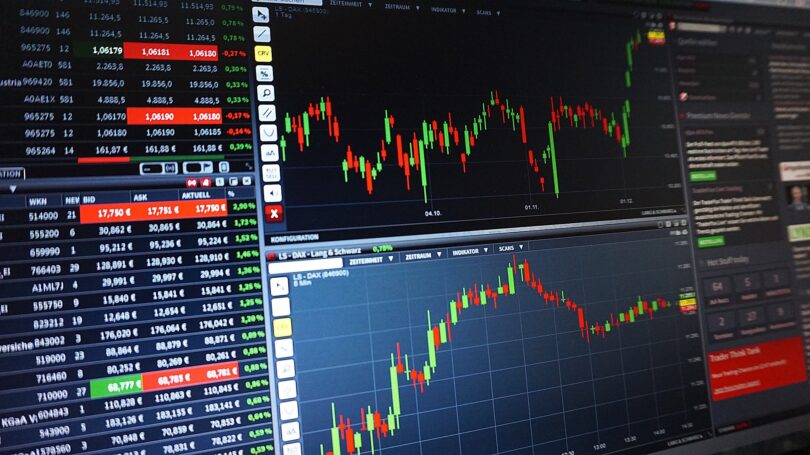Introduction:
In the ever-evolving landscape of commerce, understanding the intricate dynamics of industries is akin to deciphering the code of economic progression. Industry analysis serves as the compass, guiding stakeholders through the labyrinth of market forces, competition, and consumer behavior. However, beyond mere analysis lies the crucial aspect of discerning trends, those subtle yet powerful currents shaping the future contours of industries.
The Essence of Industry Analysis
Industry analysis is the systematic examination of a particular sector’s structure, trends, and dynamics. It delves deep into the forces influencing competitiveness, profitability, and growth prospects. Through rigorous scrutiny of factors such as market size, growth rate, regulatory environment, technological advancements, and key players’ strategies, analysts gain valuable insights into the industry’s health and trajectory.
At its core, industry analysis serves multifaceted purposes:
1. Strategy Formulation:
Businesses leverage industry analysis to craft effective strategies that capitalize on emerging opportunities and mitigate potential threats. By comprehensively understanding the competitive landscape, companies can position themselves strategically to gain a competitive edge.
2. Investment Decision Making:
Investors rely on industry analysis to identify lucrative investment opportunities and assess the risk-return profile of various sectors. A thorough understanding of industry dynamics enables investors to allocate capital judiciously, maximizing returns while minimizing risks.
3. Policy Formulation:
Policymakers and regulators utilize industry analysis to formulate policies that foster growth, innovation, and sustainability within specific sectors. By discerning the sector’s challenges and opportunities, policymakers can enact measures conducive to industry development and societal welfare.
4. Market Entry Strategies:
For aspiring entrants, industry analysis is indispensable in formulating effective market entry strategies. By gauging market attractiveness, competitive intensity, and barriers to entry, new entrants can devise strategies to carve a niche for themselves in the industry.
Unveiling the Trends: Navigating the Future
While industry analysis provides a snapshot of the present, discerning trends is akin to gazing into the crystal ball, offering glimpses of the future landscape. Trends are the subtle shifts, emerging patterns, and disruptive forces that shape industries’ trajectories over time. By identifying and adapting to these trends, businesses can stay ahead of the curve and thrive in an ever-changing environment.
Key Trends Shaping Industries:
1. Digital Transformation:
The pervasive influence of technology continues to redefine industries across the board. From artificial intelligence and big data analytics to blockchain and the Internet of Things (IoT), digital transformation is revolutionizing business models, processes, and customer interactions. Industries that embrace digitalization stand poised to gain a competitive advantage in efficiency, innovation, and customer experience.
2. Sustainability Imperative:
With mounting concerns over climate change and environmental degradation, sustainability has emerged as a critical trend across industries. From renewable energy and eco-friendly manufacturing to sustainable packaging and ethical sourcing, businesses are increasingly aligning their operations with sustainability goals. Embracing sustainable practices not only mitigates environmental risks but also enhances brand reputation and customer loyalty.
3. E-commerce Explosion:
The proliferation of e-commerce has reshaped consumer behavior and market dynamics, exerting profound implications across industries. The convenience, accessibility, and variety offered by online platforms continue to fuel the growth of e-commerce, disrupting traditional retail models and supply chains. Industries that adapt to the e-commerce paradigm stand to capitalize on the burgeoning digital marketplace.
4. Resilience and Agility:
In an era marked analysis by volatility, uncertainty, complexity, and ambiguity (VUCA), trends resilience and agility have become paramount for industries to navigate turbulent waters. The ability to swiftly adapt to changing circumstances, anticipate disruptions, and innovate in response to evolving consumer needs is instrumental in sustaining competitive advantage amidst uncertainty.
5. Health and Wellness Wave:
The global pandemic has catalyzed a heightened focus on health and wellness, permeating industries ranging from healthcare and food to fitness and beauty. Consumers are increasingly prioritizing products and services that promote physical and mental well-being, spurring innovation and investment in health-centric offerings.
Industry Analysis: Beyond the Basics
While traditional industry analysis focuses on factors such as market size, Trends growth rate, and competitive landscape, a comprehensive understanding demands a deeper dive into subtler dimensions:
1. Value Chain Analysis:
Examining the value chain allows stakeholders to identify critical activities and sources of competitive advantage within an industry. By dissecting the value chain into primary and support activities, analysts gain insights into cost structures, differentiation strategies, and potential areas for optimization.
2. Porter’s Five Forces:
Porter’s Five Forces framework offers a systematic approach to assessing industry competitiveness by analyzing the bargaining power of buyers and suppliers, the threat of new entrants, the threat of substitutes, and competitive rivalry. Understanding these forces elucidates the underlying dynamics shaping industry profitability and sustainability.
3. SWOT Analysis:
SWOT (Strengths, Weaknesses, Opportunities, Threats) analysis provides a holistic view of an industry’s internal strengths and weaknesses, as well as external opportunities and threats. By identifying internal capabilities and external environmental factors, stakeholders can devise strategies to capitalize on strengths, mitigate weaknesses, exploit opportunities, and counter threats.
Emerging Trends Redefining Industries:
1. Remote Work Revolution:
The proliferation of remote work, accelerated by the COVID-19 pandemic, has profound implications across industries. From technology and telecommunications to real estate and transportation, businesses are reimagining work models, digital infrastructure, and employee engagement strategies to accommodate remote workforces. The shift towards remote work not only enhances flexibility and work-life balance but also unlocks talent pools and reduces geographic constraints.
2. Rise of Artificial Intelligence (AI):
AI continues to permeate industries, revolutionizing operations, decision-making, and customer interactions. From predictive analytics and chatbots to autonomous vehicles and robotic process automation (RPA), AI-powered solutions are driving efficiency, innovation, and personalization across sectors. Industries that harness the power of AI stand poised to unlock new value streams, optimize processes, and enhance competitiveness.
3. Healthcare Transformation:
The convergence of healthcare and technology is ushering in a new era of patient-centric care, preventive medicine, and personalized treatments. Telemedicine, wearable devices, precision medicine, and health informatics are revolutionizing healthcare delivery, diagnosis, and treatment. Moreover, the integration of artificial intelligence, genomics, and digital health platforms promises to usher in a paradigm shift towards proactive, data-driven healthcare.
4. Circular Economy Initiatives:
As sustainability takes center stage, industries are embracing circular economy principles to minimize waste, conserve resources, and promote regenerative practices. From circular design and product lifecycle management to recycling and remanufacturing, businesses are reimagining supply chains and business models to create value while minimizing environmental impact. Circular economy initiatives not only mitigate risks associated with resource scarcity and climate change but also unlock opportunities for innovation and cost savings.
5. Evolving Consumer Preferences:
In an era of hyper-connectivity and social media influence, consumer preferences are evolving at a rapid pace. From conscious consumerism and experiential retail to digital nomadism and subscription-based models, industries must adapt to shifting consumer behaviors and expectations. Embracing customer-centricity, personalization, and omnichannel experiences is essential for businesses to stay relevant and resonate with diverse consumer segments.
conclusion:
industry analysis and trend identification serve as indispensable tools for navigating the dynamic currents of commerce. By going beyond the surface and delving deeper into industry dynamics and emerging trends, stakeholders can unlock new opportunities, mitigate risks, and chart a course toward sustainable growth and competitive advantage in an ever-changing business landscape.








